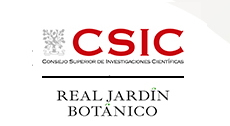Scientific Area
Vegetation and land-use distribution determine aerobiological risk areas in the Madrid Region
ID: 613 / 399
Category: Abstract
Track: Pending
Proposed Symposium Title: Vegetation and land-use distribution determine aerobiological risk areas in the Madrid Region
Authors:
Jesús Rojo1, Patricia Cervigón1, Zuzana Ferencova2, Ángel Cascón1, Jorge Romero-Morte1, Javier Galán Díaz3,1, Silvia Sabariego4, Margarita Torres1, Adela Montserrat Gutiérrez-Bustillo1
Affiliations: 1 Department of Pharmacology, Pharmacognosy and Botany, Faculty of Pharmacy, Complutense University of Madrid, Madrid, Spain 2 Atlantic Botanical Garden of Gijón, Gijón, Spain 3 Department of Plant Biology and Ecology, University of Sevilla, Sevilla, Spain 4 Department of Biodiversity, Ecology and Evolution, University Complutense of Madrid, Madrid, Spain
Abstract:
Pollen is the main source of outdoor aeroallergens, together with fungal spores, and because of allergic respiratory diseases depend on the seasonal occurrence of these aeroallergens, exacerbations of allergic symptoms follow a strongly seasonal pattern. Vegetation distribution and land-use configuration of the territory determine the occurrence and magnitude of pollen exposure, and then the airborne pollen spectrum. The aims of this study were to characterise the airborne pollen dynamics of aerobiological sampling stations of the Madrid Region Palynological Network in relation to the potential pollen sources and to define aerobiological risk areas of the Madrid Region based on homogeneous patterns of occurrence and intensity of the main pollen taxa. Multiple clustering approaches were conducted to group (i) the sampling stations of the aerobiological network and (ii) all pixels of the Madrid Region (central Spain). The clustering dendrogram based on vegetation distribution was compared to those based on airborne pollen characteristics. The results showed a great correspondence between potential pollen sources distribution and airborne pollen dynamics. The Madrid Region was divided into six aerobiological risk areas based on the potential pollen sources. These risk areas were ordered following a clear anthropogenic gradient, with one cluster in the centre covering the most urbanised areas, another one covering agricultural lands in the south and southeast, and four more clusters in the forest-dominated environments of the Madrid Region. Spatial regionalisation in environmental risk assessment favours the application of management plans by the institutions responsible of the management of public health systems and allows resources to be optimised. The mapping of risk areas based on impact of allergenic plant species constitute a step forward in the management of the biological air quality of Madrid Region.




